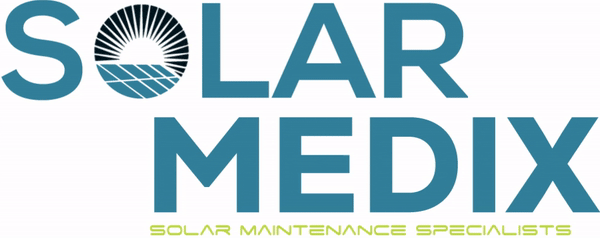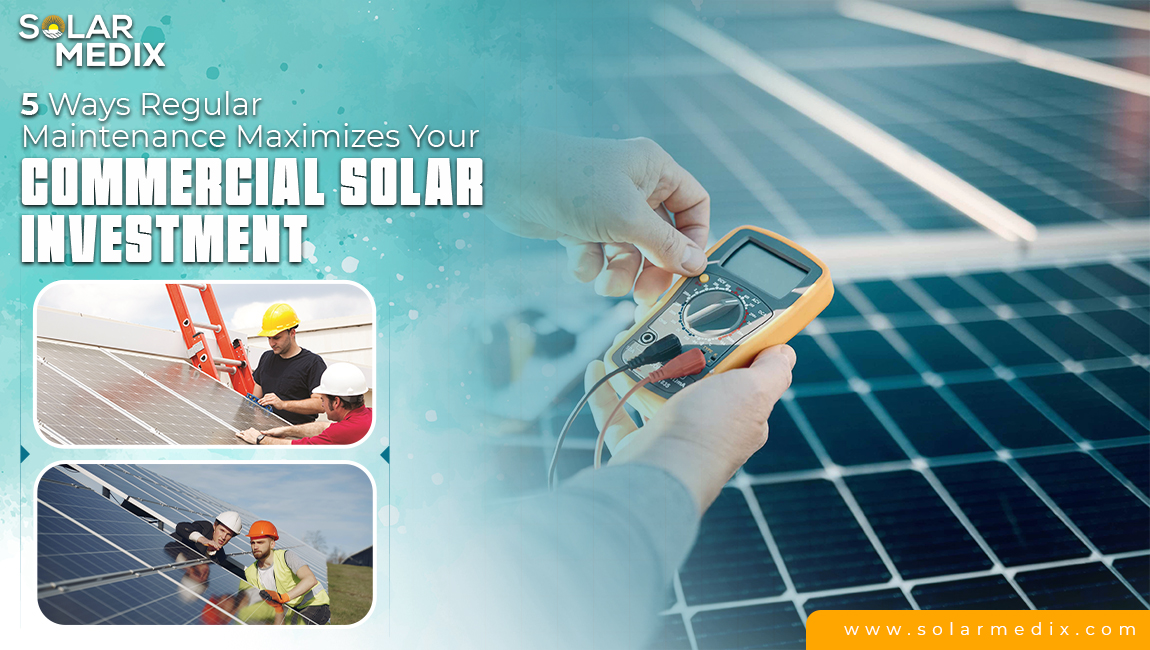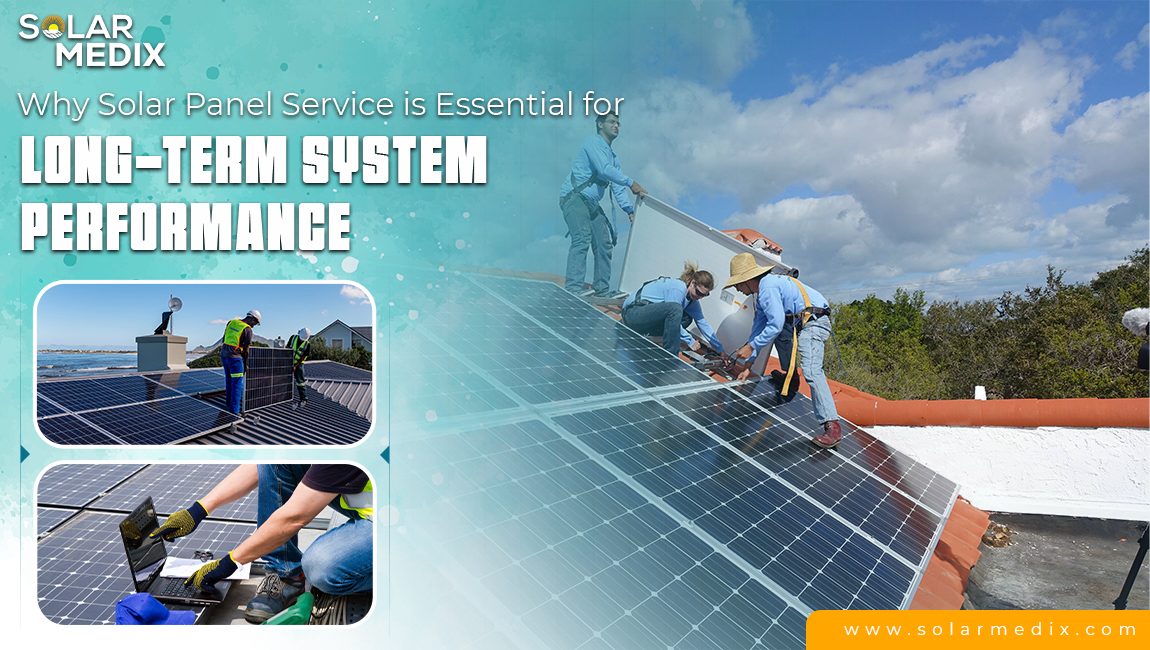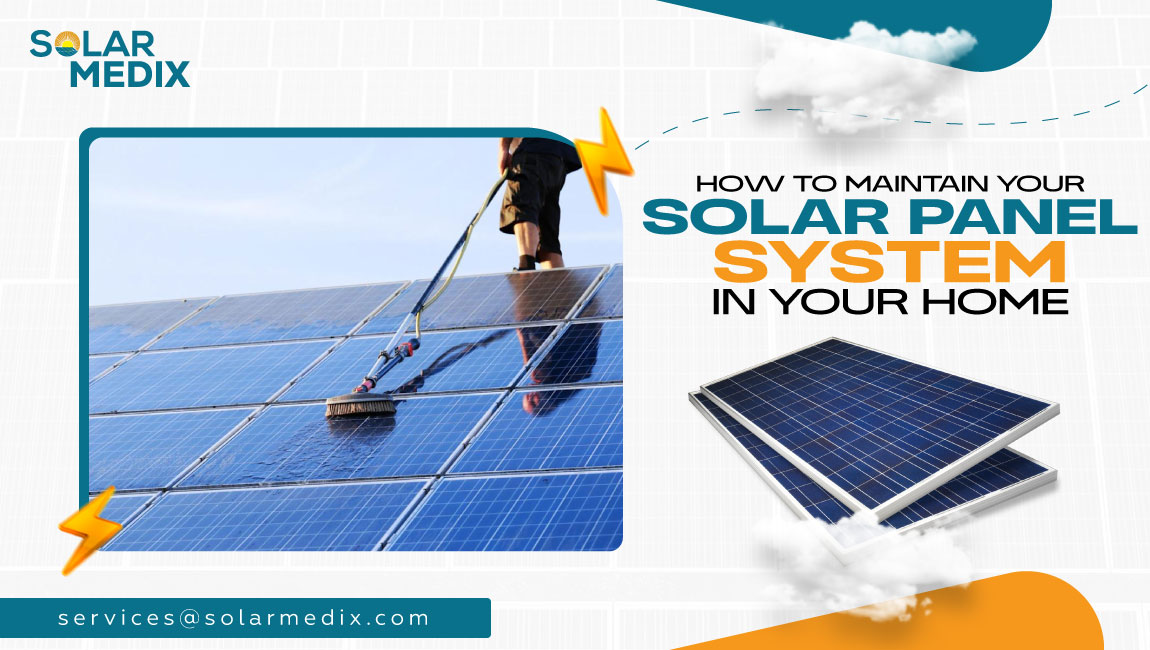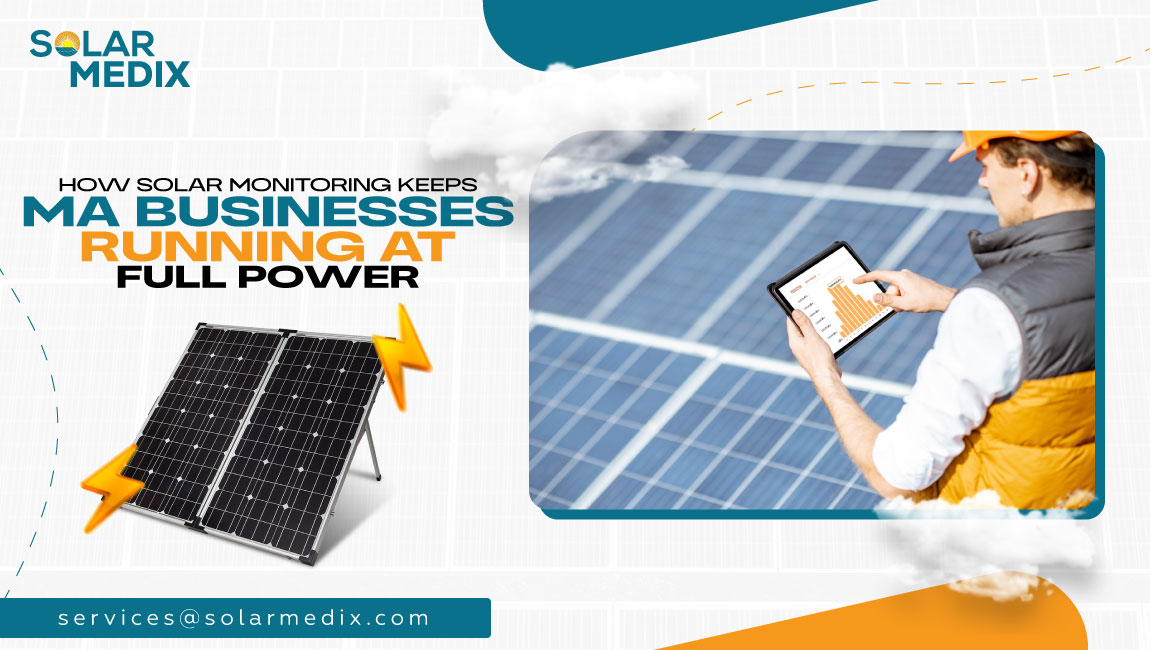Have you ever thought of the reason why some businesses are making bigger savings from their solar panels than others? “Consistent care turns solar panels into profit engines,” industry experts say.
In fact, not performing regular maintenance can reduce energy output by up to 30%, according to Science Direct. Without maintenance, returns can slip quietly away. The truth is, most commercial systems lose thousands each year simply from overlooked dirt or missed inspections.
Read this article and you’ll discover five smart ways to protect your investment, avoid hidden losses, and ensure your solar setup keeps paying you back—long after installation is complete.
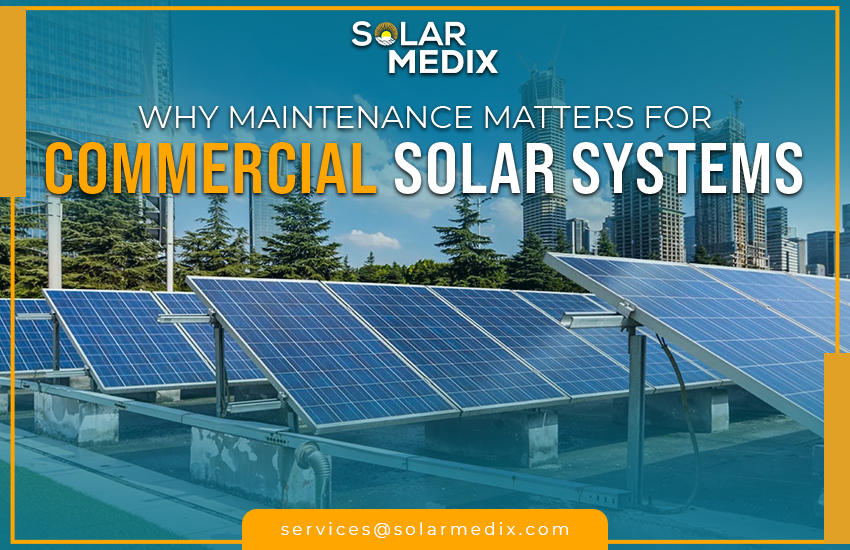
Why Maintenance Matters for Commercial Solar Systems
Have you considered the size and demands of your commercial solar array? Researches show that average systems for businesses are three times larger than those for residential setups. These complex networks feature hundreds, sometimes thousands, of solar modules relying on seamless operation.
If a commercial installation goes offline for one day, your company could lose up to $100 in potential energy savings. Even a minor issue, such as a single dirty panel, can reduce total system output by 25%, which can significantly impact your bottom line. Inverters, the brains behind solar conversion, account for 36% of all commercial solar failures.
Are you prepared for unexpected breakdowns, where a simple missed inspection can transform into a substantial financial loss? Consistent professional maintenance prevents these problems. Moreover, it helps build reliability and keeps those utility bills lower month after month.
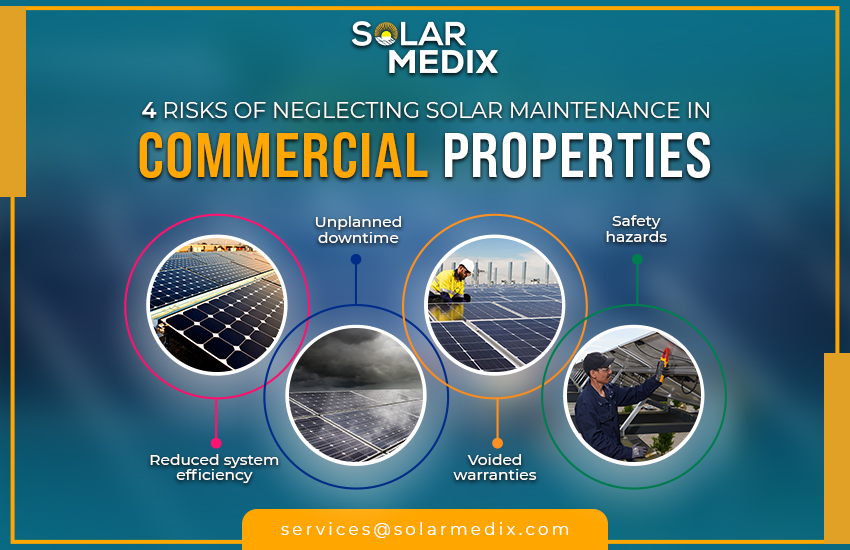
4 Risks of Neglecting Solar Maintenance in Commercial Properties
Consider the consequences of your business grinding to a halt due to overlooked solar care. At Solar Medix, we have seen this happen too often. Field studies and solar industry reports show that neglected maintenance can reduce solar energy output by as much as 25–35%. That means higher bills can quickly eat into your profits.
Downtime due to faults can cost $1,000 per hour in lost operations, according to industry reports. Have you calculated your potential losses?
Warranties are void without proper upkeep, resulting in repair bills exceeding $10,000. Safety risks also rise—neglected maintenance can lead to electrical faults, which are the leading cause of rare solar system fires according to industry and fire investigation studies. Why risk it? Address these now to protect your investment.
Now, consider four critical risks of avoiding regular maintenance:
- Reduced system efficiency: Soiling (dirt and dust) blocks sunlight, decreasing energy production by 20-25%, which leads to an unexpected increase in electricity costs.
- Unplanned downtime: Malfunctioning parts, such as unexpected inverter failure, result in lost productivity and diminished revenue during peak business hours.
- Voided warranties: Manufacturers expect regular maintenance; without it, the company’s warranty is voided, and you will pay full price for something they might have replaced for free.
- Safety hazards: With faulty wires or overheated panels, there’s a risk of fire and bodily harm to personnel and property, as well as possible violations of local building codes.
When was the last time you monitored the health of your system? These are not just bad for your wallet; they also erode trust in solar as a reliable source of energy. But meeting them in the context of routine care flips the script.
Curious how regular maintenance can transform your solar investment? Don’t miss our latest blog, “Why Solar Panel Inspections are Crucial for Businesses.”
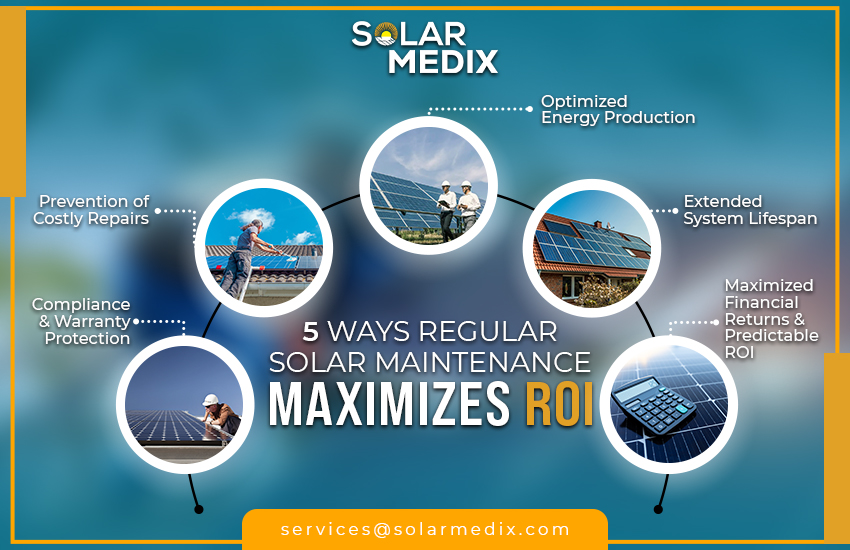
5 Ways Regular Solar Maintenance Maximizes ROI
Did you know that Routine cleaning and maintenance can recover several percent in lightly soiled climates and reach double‑digit gains in dusty environments; a recent peer‑reviewed study measured about a 6.31% energy increase from a self‑cleaning mechanism over one month, illustrating realistic magnitude for soiling mitigation rather than a blanket 35% savings claim.
In Australia, the principal small‑scale solar incentive is delivered upfront through Small‑scale Technology Certificates (STCs) at installation, not through annual inspections; typical upfront discounts vary by system size, zone, and STC price and commonly total a few thousand dollars, but they are not contingent on yearly maintenance checks.
Preventive and predictive maintenance reduce failure rates and improve reliability, with methods such as thermal inspections, IoT monitoring, and data‑driven anomaly detection shown to minimize downtime and extend equipment lifespan. What additional benefits could a basic maintenance program offer for your investment?
In addition to reliable service, you benefit from the availability of accurate energy forecasts to help make budgeting easier for all business owners.
Let’s dissect those in five key ways, each supported by our real-world experience and industry data.
- Optimized Energy Production: Empirical and review literature show cleaning can recover roughly 3–6% in mild‑soiling climates and reach higher, double‑digit recovery in dusty regions; a PLOS ONE study reported about 6.31% energy increase from an automated self‑cleaning setup over one month, while broader surveys document soiling losses that can range up to double digits depending on environment.
- Prevention of Costly Repairs: Early detection via inspections spots wear before it worsens, saving thousands; for instance, fixing a loose connection now avoids a full system shutdown later.
- Extended System Lifespan: Consistent care protects against environmental damage, extending longevity beyond 25-30 years—our thermal scans have helped systems outlast expectations in harsh weather conditions.
- Compliance & Warranty Protection: We ensure you meet manufacturer and regulatory standards, preserving warranties and avoiding fines; this keeps your investment secure and compliant.
- Maximized Financial Returns & Predictable ROI: With steady performance, ROI hits 15-20% annually. (SEIA reports) Our clients enjoy reliable cash flow without surprises.
Curious about your system’s potential? These strategies build on each other for unbeatable results. Next, discover what our maintenance packages entail.
Don’t miss our latest article, “Role of Infrared Inspections in Solar Warranty Investigations.” Discover how advanced IR scans help detect hidden faults and protect your solar investment, building on the maintenance strategies covered above.
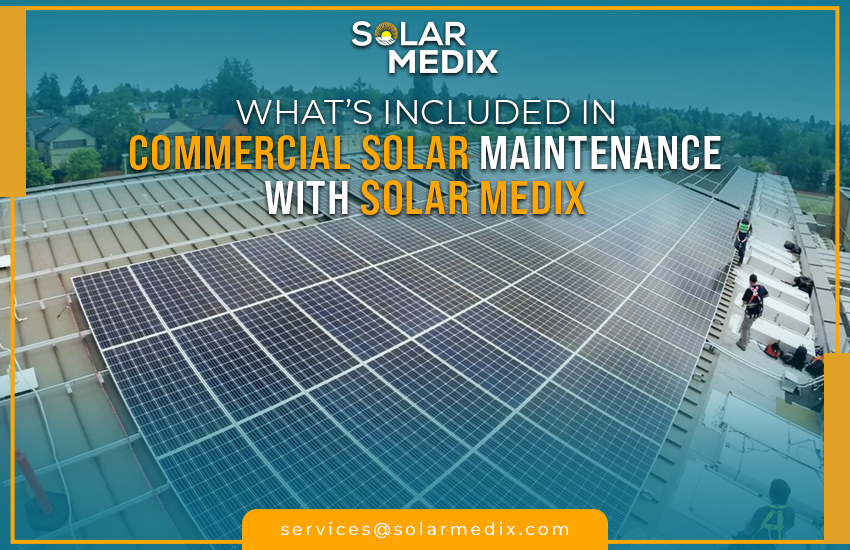
What’s Included in Commercial Solar Maintenance with Solar Medix
Wondering what you receive with Solar Medix’s service? Published O&M reviews and predictive‑maintenance research show that proactive PV maintenance improves availability and reduces downtime, but a universal “32% uptime improvement” is not supported; instead, cite preventive/predictive maintenance as practices that increase availability and lower corrective interventions, with impacts varying by site and monitoring maturity.
Every panel inspection covers hotspots, and studies indicate that early detection of electrical faults significantly reduce the repair costs. Routine inverter diagnostics can detect failures up to two months before breakdowns, minimizing downtime.
Have you ever seen your solar monitoring dashboard alert before a problem hits? Our shading analysis often boosts overall system. Isn’t that peace of mind worth it?
Here’s what we include:
- Panel cleaning & inspection: We eliminate dirt and inspect for cracks, restoring 100% efficiency to avoid output reduction.
- Inverter testing & repair: We troubleshoot and repair problems to ensure uninterrupted energy conversion.
- Thermal imaging (IR scans): IR scans identify hot spots or defects that human vision can’t see, preventing potential failures.
- Monitoring system audits: we examine data logs for irregularities and tweak performance based on real-time insights.
- Shading analysis & system optimization: Professionals analyze and minimize the effect of shade to increase the total energy yield.
- Warranty & RMA support: We manage claims and returns. It helps you safeguard your coverage effortlessly.
Ready to see these in action? This process ensures maximum value out of your investment.

Partner with Solar Medix and Get Your Commercial Solar Panels Maintained
Why wait until things go wrong when Solar Medix has all the commercial solar maintenance you could ask for in a package that suits what, how, and when you want it? As a partner you can trust for businesses nationwide, we provide expert knowledge—certified by NABCEP and supported with partnerships from leading manufacturers.
Our experience is evident on every job—we’ve seen systems on the verge of failure and achieved the ROI our clients need in multiple industries, including automotive, agricultural, and others.
You no longer have to worry about stress or wonder how to maximize the benefits of your solar investment, as our team arrives fully equipped, completes a thorough inspection and servicing, and provides you with a comprehensive report. Best of all, we promise not to interfere with your business.
So, it’s time to get the most out of your solar investment?
You are welcome to contact us at info@solarmedix.com and visit our website for a FREE CONSULTATION.
Let’s make maintenance your company’s competitive advantage—because Solar Medix doesn’t just repair panels, we power success.
FAQs
Regular panel cleaning is the most effective way to ensure consistent solar output. Regular cleaning removes accumulated dust and dirt, allowing for increased sunlight exposure and maintaining a strong production. Many businesses are generating up to 20% more energy just from cleaning their panels.
A solid commercial solar panel ROI usually sits between 10% and 20% annually. That number will vary depending on location, utility rates, and the level of maintenance. But businesses can easily recover installation costs in as little as five to seven years with proper care and good sun exposure.
Maintaining commercial panels twice a year typically covers most needs, but locations with dusty conditions may require extra attention. At Solar Medix, technicians assess local conditions to set the right schedule. The method helps identify small issues in their early stages, which can save downtime and keep your solar system working efficiently long term without any surprises.
